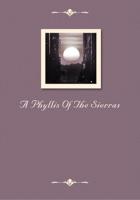The objection that 'this is not the reason why the result is false', which we frequently make in argument, is made primarily in the case of a reductio ad impossibile, to rebut the proposition which was being proved by the reduction. For unless a man has contradicted this proposition he will not say, 'False cause', but urge that something false has been assumed in the earlier parts of the argument; nor will he use the formula in the case of an ostensive proof; for here what one denies is not assumed as a premiss. Further when anything is refuted ostensively by the terms ABC, it cannot be objected that the syllogism does not depend on the assumption laid down. For we use the expression 'false cause', when the syllogism is concluded in spite of the refutation of this position; but that is not possible in ostensive proofs: since if an assumption is refuted, a syllogism can no longer be drawn in reference to it. It is clear then that the expression 'false cause' can only be used in the case of a reductio ad impossibile, and when the original hypothesis is so related to the impossible conclusion, that the conclusion results indifferently whether the hypothesis is made or not. The most obvious case of the irrelevance of an assumption to a conclusion which is false is when a syllogism drawn from middle terms to an impossible conclusion is independent of the hypothesis, as we have explained in the Topics. For to put that which is not the cause as the cause, is just this: e.g. if a man, wishing to prove that the diagonal of the square is incommensurate with the side, should try to prove Zeno's theorem that motion is impossible, and so establish a reductio ad impossibile: for Zeno's false theorem has no connexion at all with the original assumption. Another case is where the impossible conclusion is connected with the hypothesis, but does not result from it. This may happen whether one traces the connexion upwards or downwards, e.g. if it is laid down that A belongs to B, B to C, and C to D, and it should be false that B belongs to D: for if we eliminated A and assumed all the same that B belongs to C and C to D, the false conclusion would not depend on the original hypothesis. Or again trace the connexion upwards; e.g. suppose that A belongs to B, E to A and F to E, it being false that F belongs to A. In this way too the impossible conclusion would result, though the original hypothesis were eliminated. But the impossible conclusion ought to be connected with the original terms: in this way it will depend on the hypothesis, e.g. when one traces the connexion downwards, the impossible conclusion must be connected with that term which is predicate in the hypothesis: for if it is impossible that A should belong to D, the false conclusion will no longer result after A has been eliminated. If one traces the connexion upwards, the impossible conclusion must be connected with that term which is subject in the hypothesis: for if it is impossible that F should belong to B, the impossible conclusion will disappear if B is eliminated. Similarly when the syllogisms are negative.
It is clear then that when the impossibility is not related to the original terms, the false conclusion does not result on account of the assumption. Or perhaps even so it may sometimes be independent. For if it were laid down that A belongs not to B but to K, and that K belongs to C and C to D, the impossible conclusion would still stand.
Similarly if one takes the terms in an ascending series.
Consequently since the impossibility results whether the first assumption is suppressed or not, it would appear to be independent of that assumption. Or perhaps we ought not to understand the statement that the false conclusion results independently of the assumption, in the sense that if something else were supposed the impossibility would result; but rather we mean that when the first assumption is eliminated, the same impossibility results through the remaining premisses; since it is not perhaps absurd that the same false result should follow from several hypotheses, e.g. that parallels meet, both on the assumption that the interior angle is greater than the exterior and on the assumption that a triangle contains more than two right angles.















